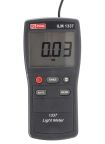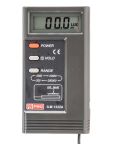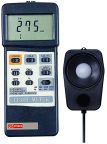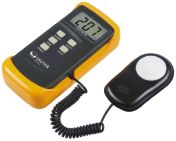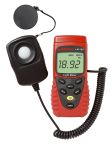Calibration Lux Meter
A lux meter (also referred to as a light meter) is an instrument used to measure illuminance, which is the amount of light that falls on a surface. Illuminance is measured in lux (lx), which quantifies the intensity of light as perceived by the human eye.
Calibrated lux meters offer a higher level of accuracy and reliability, making them indispensable in professional and scientific applications.
Calibrated Lux Meters
Calibrated lux meters are lux meters that have undergone a process of calibration to ensure their measurements are accurate and traceable to known standards. Calibration involves comparing the readings from the lux meter with a reference light source that has a precisely known illuminance value. The process adjusts the meter to correct any discrepancies, ensuring its readings are accurate within a specified tolerance.
Calibration is crucial for ensuring reliable and consistent measurements, especially in professional settings where precise light levels are essential. For instance, in occupational health and safety, calibrated lux meters ensure that workplaces comply with lighting standards. In scientific research, they ensure experimental conditions are consistent and reproducible.
Key Features of Calibrated Lux Meters
- Traceability - calibration provides traceability to national or international standards, ensuring the lux meter's accuracy.
- Certification - calibrated lux meters often come with a calibration certificate that documents the calibration process and the meter's accuracy.
- Regular Calibration - to maintain accuracy, lux meters typically require periodic re-calibration
Where would you use a Lux meter?
Lux meters are used in various settings, including workplaces, photography, cinematography, horticulture, and research, to ensure appropriate lighting levels.
7 Products showing for Calibration Lux Meter
Popular Searches
Related links
- A Complete Guide to Light Meters
- Testo 440 Lux Kit (air velocity and IAQ measuring instrument) Light Meter
- Testo 540 Light Meter ±3 %
- Testo 545 Luminance Meters ±3 %
- RS PRO RS-3809 Light Meter ±3 %
- RS PRO ILM1335 Light Meter ±3 % ± 0.5 Digit %, With RS Calibration
- Extech EN300 Light Meter
- Extech UV505 Light Meter, ±5 %
